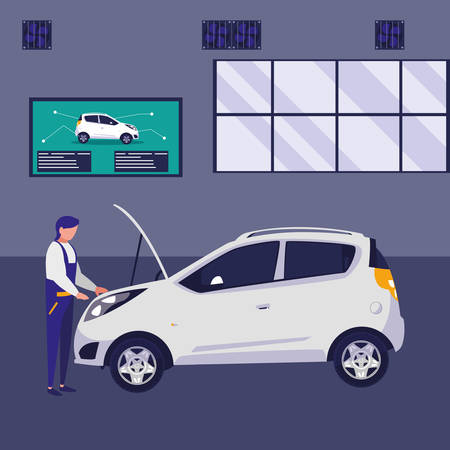Understanding Defensive Driving
Defensive driving is more than just a skill—it’s a mindset that shapes the culture of American roads. At its core, defensive driving means anticipating potential hazards and making safe, well-informed decisions behind the wheel. This approach is deeply woven into everyday life in the United States, where highways stretch for miles and traffic patterns can change in an instant. By embracing defensive driving, motorists not only protect themselves but also help create safer roads for everyone. The importance of this philosophy cannot be overstated, as it helps drivers prepare for the unexpected, from sudden weather changes to unpredictable actions by others on the road. In the American driving landscape, where freedom and independence are closely tied to car culture, adopting a defensive attitude ensures that every journey is approached with caution, care, and responsibility.
2. Why Speed Matters in Safety
When it comes to defensive driving, speed control is more than just following a number on a sign—its about embracing a culture of safety that has shaped American roads for generations. Keeping your speed in check plays a crucial role in reducing risk, giving you more time to react, and staying in line with traffic laws across the United States. Let’s break down why this classic principle stands the test of time.
The Link Between Speed and Risk Reduction
Every mile per hour matters. Driving at appropriate speeds gives you—and everyone around you—a better chance to avoid accidents. The faster you go, the less time you have to respond to sudden changes, whether it’s a child chasing a ball into the street or another driver making an unexpected stop. Slowing down means you’re not just protecting yourself, but honoring the collective safety of your community.
Enhancing Reaction Time: A Classic Defensive Move
Think of reaction time as your “safety cushion.” When you drive at reasonable speeds, your ability to process information and act decisively improves dramatically. Heres how speed affects your response:
| Speed (mph) | Average Stopping Distance (feet) | Reaction Time (seconds) |
|---|---|---|
| 25 | 85 | 1.5 |
| 35 | 136 | 1.5 |
| 55 | 265 | 1.5 |
(Based on average dry road conditions; actual distances may vary.)
Respecting U.S. Traffic Laws: More Than Just Compliance
Across America, speed limits are set with care, reflecting local road conditions and decades of experience. By respecting these limits, youre participating in a shared tradition of safety and responsibility. Whether youre cruising along Route 66 or navigating city streets, obeying posted speeds helps keep everyone—drivers, cyclists, and pedestrians—safe and sound.

3. Techniques for Effective Speed Control
When it comes to defensive driving, mastering speed control is more than just a matter of following the speed limit—its about embracing timeless techniques that keep you and others safe on the road. One classic strategy drivers have relied on for decades is cruise control. With a simple flick of a switch, cruise control helps maintain a steady pace, especially on those long stretches of American highways where the temptation to speed can creep in. This not only improves fuel efficiency but also reduces the mental load of constantly monitoring your speed.
However, true speed control demands situational awareness—a core principle in defensive driving. This means keeping your eyes open for changing traffic patterns, weather conditions, and potential hazards like sudden stops or construction zones. Seasoned drivers know that no two drives are ever the same. Adapting your speed to match road conditions is a sign of respect for both the craft of driving and those who share the road with you.
Adapting isn’t just about slowing down during rain or snow; its also about recognizing when to ease off the gas around sharp bends, school zones, or busy intersections. By blending technology like cruise control with old-school awareness and adaptability, American drivers continue to uphold the time-honored tradition of safe and mindful driving—one mile at a time.
4. The Impact of American Road Environments
Speed control isn’t a one-size-fits-all practice, especially in the vast and varied landscapes of the United States. From sprawling highways to bustling city streets and winding rural roads, each environment presents unique challenges that demand a keen sense of awareness and adaptability from drivers. Understanding how these environments influence speed control is essential for anyone committed to defensive driving.
Highways: The Need for Consistent Speed
On American highways, where traffic moves at higher speeds and vehicles flow in unison, maintaining consistent speed becomes a key component of safety. Sudden changes in speed can disrupt the rhythm of traffic, increasing the risk of rear-end collisions or causing chain reactions. Defensive drivers on highways must also anticipate merging vehicles, construction zones, and variable speed limits—each requiring quick adjustments while maintaining control.
Urban Congestion: Patience and Precision
Navigating urban environments demands a different kind of vigilance. City streets are often packed with stop-and-go traffic, unpredictable pedestrians, cyclists, and frequent intersections. Here, defensive driving means being ready to decelerate at a moment’s notice and keeping speeds low enough to react to sudden changes. In many American cities, speeding even slightly above posted limits can result in dangerous situations due to short stopping distances and limited visibility.
Rural Routes: Navigating the Unexpected
Rural roads may seem peaceful but bring their own set of challenges for speed control. These routes can be narrow, poorly lit, or have sharp curves and unexpected obstacles like wildlife or slow-moving farm equipment. Defensive drivers must balance the temptation to travel quickly with the need for caution, especially since emergency services may be farther away in these areas.
Comparing Speed Control Demands Across Environments
| Environment | Main Challenges | Speed Control Strategies |
|---|---|---|
| Highway | Fast-moving traffic, merging lanes, variable limits | Maintain steady speed; anticipate merges; adjust for construction zones |
| Urban | Heavy congestion, frequent stops, pedestrian crossings | Drive below limits; increase following distance; stay alert for sudden stops |
| Rural | Narrow roads, poor lighting, unexpected obstacles | Slow down on curves; use high beams wisely; watch for wildlife/farm vehicles |
The Takeaway: Adaptability is Key
The diverse roadways across America call for more than just knowledge—they require an adaptable mindset rooted in classic defensive driving principles. Whether cruising down Route 66 or navigating a downtown gridlock, understanding the impact of your environment on speed control ensures every journey remains as safe as it is memorable.
Consequences of Poor Speed Management
Reflecting on the classic lessons learned from decades of American motoring, it’s clear that speed control isn’t just a technical skill—it’s a foundational pillar of defensive driving. Throughout history, countless accidents and near-misses on highways and backroads alike have shown us the very real consequences of poor speed management. When drivers push beyond safe limits or crawl at an unreasonably slow pace, they disrupt the natural flow of traffic and put everyone at risk.
The High Cost of Speeding
Every seasoned driver has heard stories from their parents or grandparents—those timeless warnings about what happens when you let your foot get too heavy on the gas pedal. Speeding reduces reaction time and magnifies the force of any collision, often turning what could have been a minor scrape into a life-changing event. The aftermath can include not only legal trouble and insurance hikes but also injuries that echo for years to come.
The Dangers of Driving Too Slowly
On the flip side, driving significantly under the speed limit can be just as hazardous. It frustrates other drivers, encourages risky passing maneuvers, and creates unpredictable patterns in traffic flow. The classic lesson here? Safe driving is about harmony—moving with the rhythm of the road, not against it.
Real-World Impacts: Stories That Stick
America’s roads are full of cautionary tales. From fender-benders on Main Street to high-speed pileups on the interstate, each incident reminds us that speed management isn’t just about avoiding tickets; it’s about safeguarding lives. Defensive drivers know this well—they respect both the posted limits and their own judgment, drawing on hard-earned wisdom to keep themselves and others safe.
6. Cultivating Good Habits for Generations
Speed control is more than a defensive driving tactic—it’s a time-honored value that we pass down from one generation to the next. By encouraging a culture of responsibility on the road, we help shape safer communities and ensure that our highways reflect care and respect for others. Sharing practical tips and classic wisdom with both new and seasoned drivers is essential in keeping this tradition alive.
The Power of Example
Nothing teaches better than example. When experienced drivers model steady, mindful speed control, they show younger family members and friends what it means to drive with purpose and patience. Stories about how careful speed has prevented close calls or made journeys more enjoyable add a personal touch to lessons, making them memorable and relatable.
Tips for Teaching Speed Control
- Practice what you preach—consistently observe speed limits and adjust your speed for weather or traffic.
- Use real-world situations—talk through your decisions as you drive, explaining when and why you slow down or maintain a steady pace.
- Encourage observation—teach new drivers to read the road ahead, anticipate changes, and stay alert to cues that require speed adjustments.
Sharing Wisdom That Lasts
Classic advice like “arrive five minutes late, not five seconds too soon” resonates across generations. Remind all drivers that rushing rarely saves significant time but always increases risk. Encourage open conversations about experiences on the road, inviting both questions and insights. Over time, these shared moments become part of a family’s driving legacy—a foundation built on responsibility, caution, and mutual respect.
By nurturing these habits and values, we create roads filled with thoughtful drivers who honor the enduring craft of safe travel. Every careful mile driven today sets the standard for tomorrow’s journeys.

